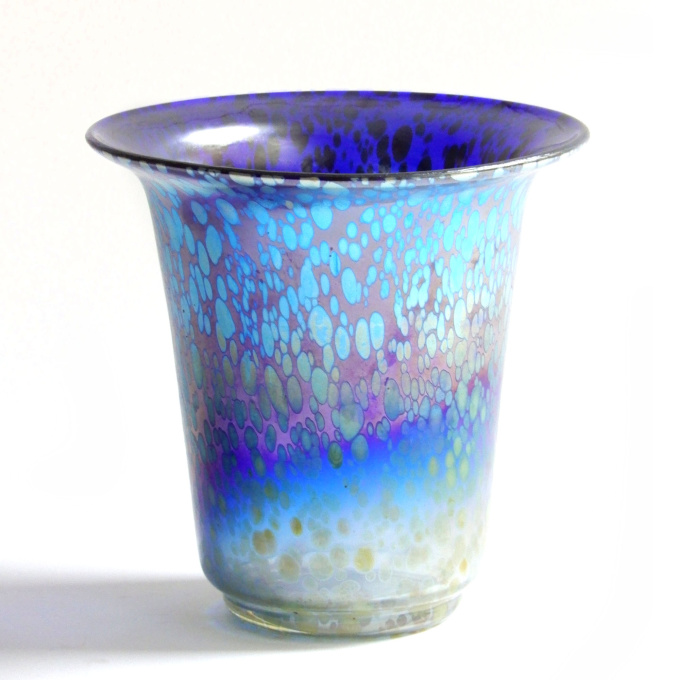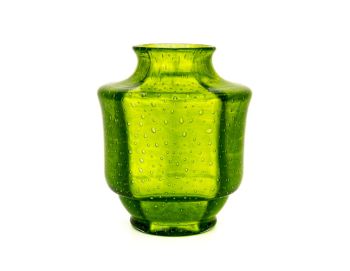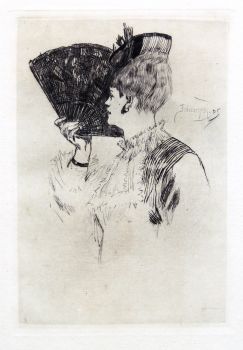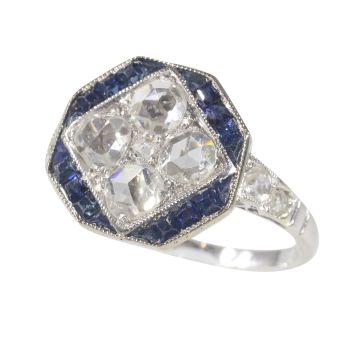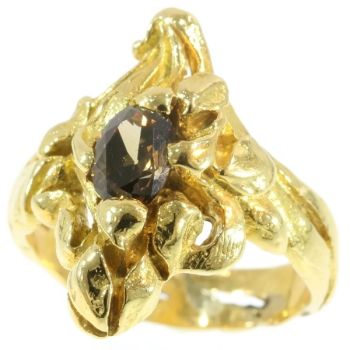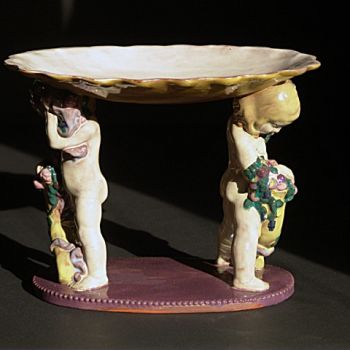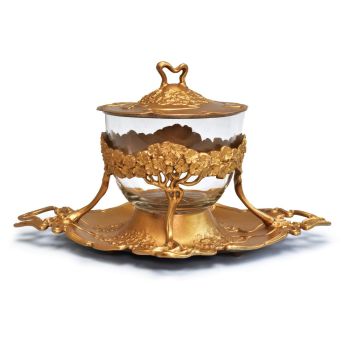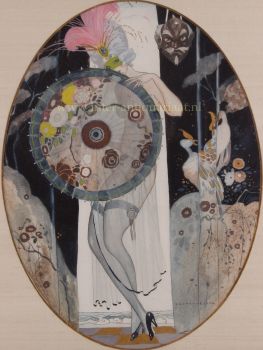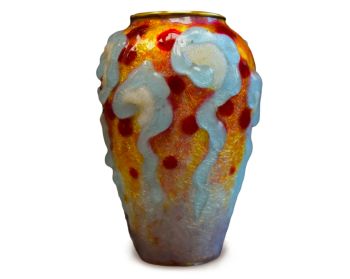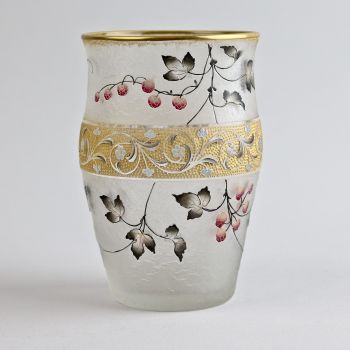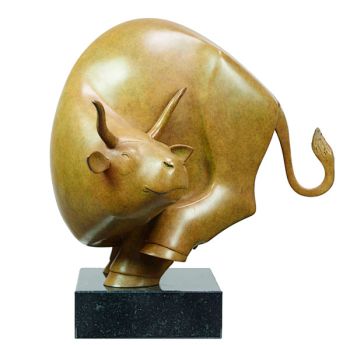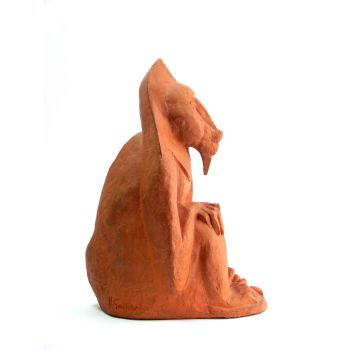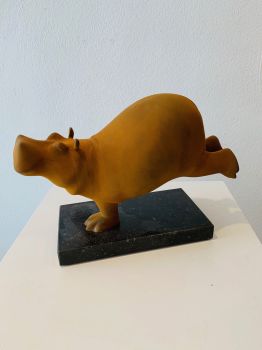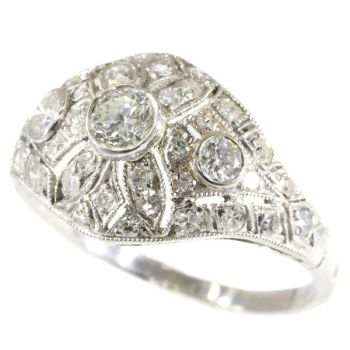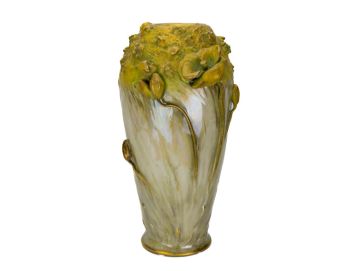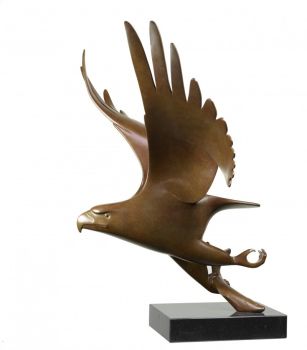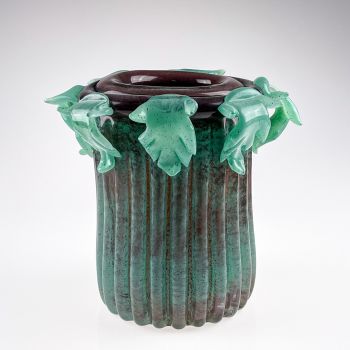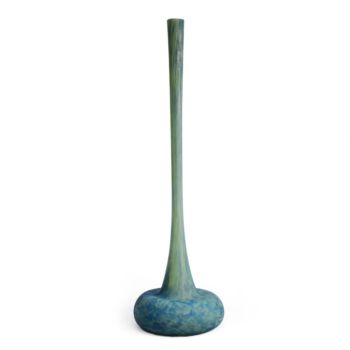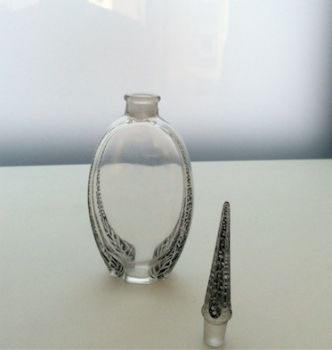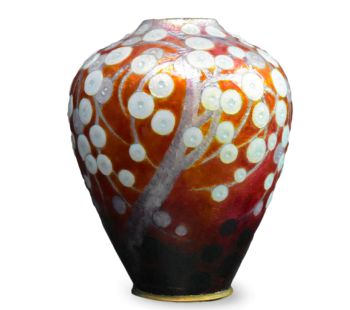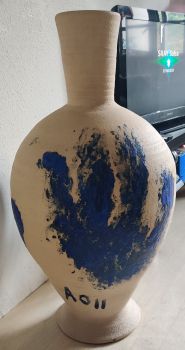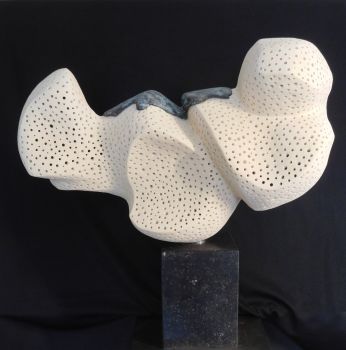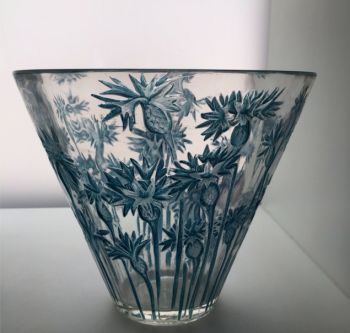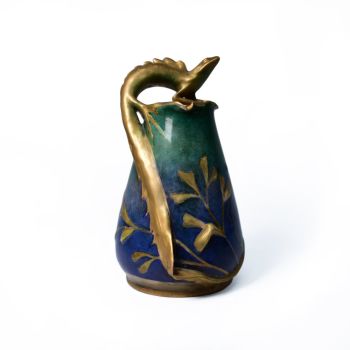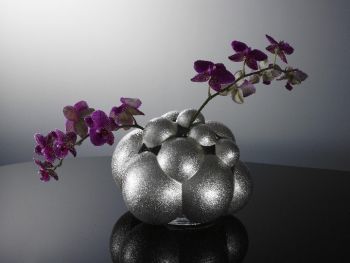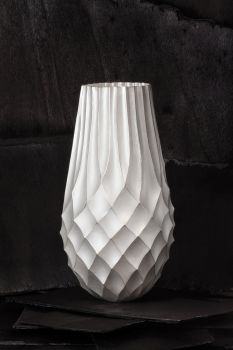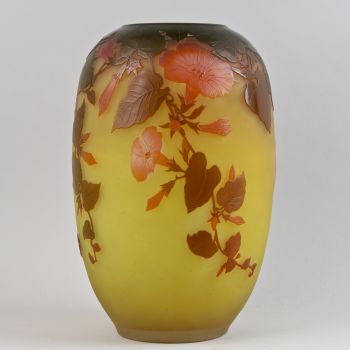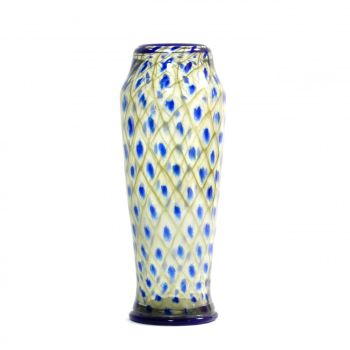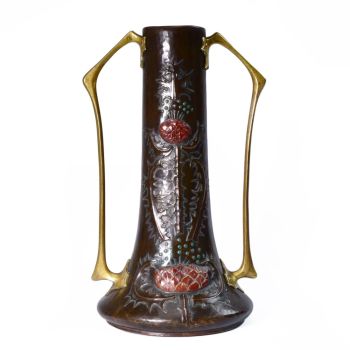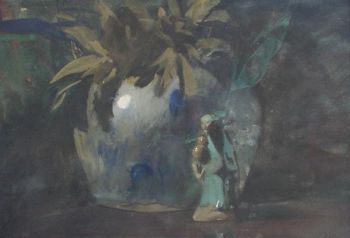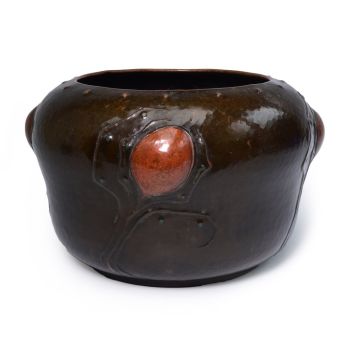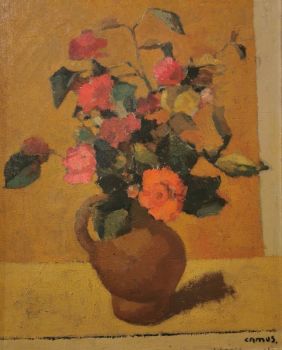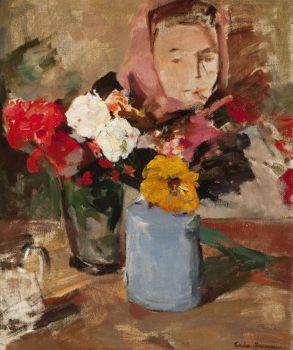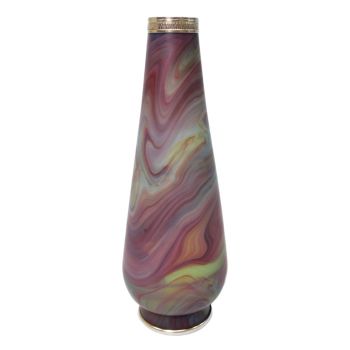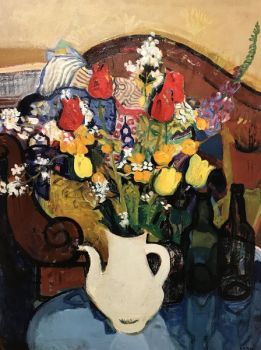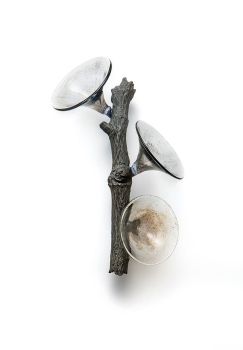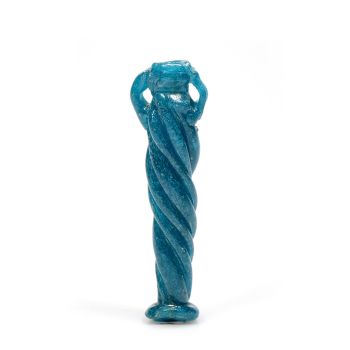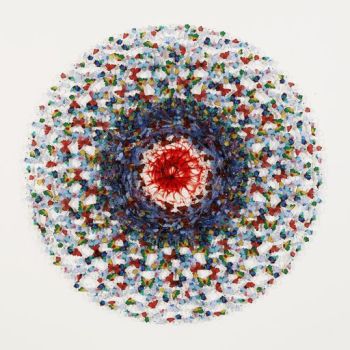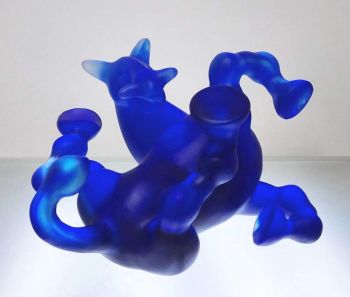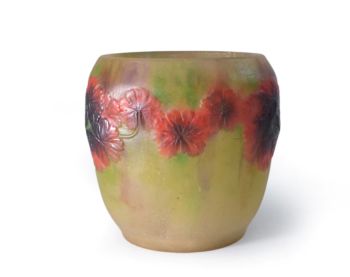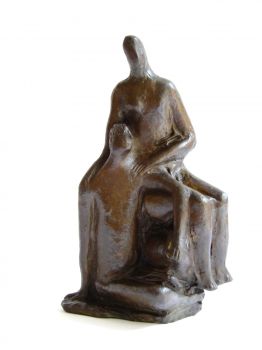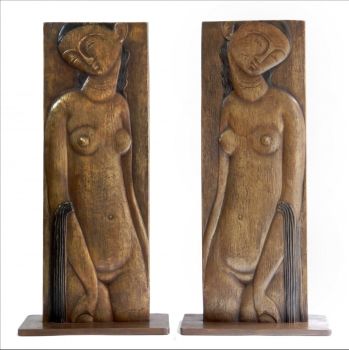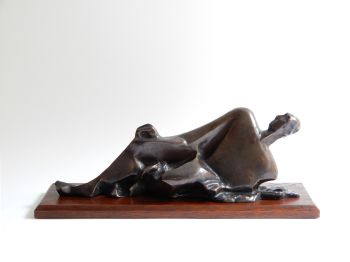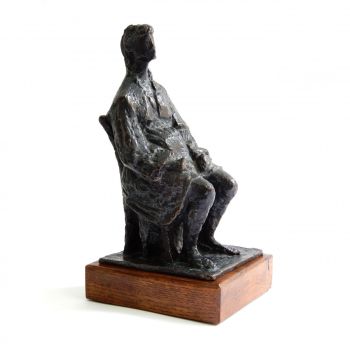Vase with papillon decor 1910 - 1920
Johann Loetz (Lötz) Witwe Klostermühle
Glass
13 cm, ø 13 cm
ConditionExcellent
Currently unavailable via Gallerease
Dille Art
- About the artworkBeautiful vase with intense colours. The vase has a flared neck and has a papillon decor in iridescent colours, from light to deep blue, soft green-yellow and violet. The vase is in excellent condition.
About Johann Lötz Witwe:
Lötz/Loetz was founded by Johann Lötz in 1840 and the company was located in Bohemia, in the Czech Republic, at the time Lötz belonged to the Austrian-Hungarian Empire.
In 1879 a grandson of Lötz, Max Ritter-Von Spaun, took over the business from his grandmother, he kept the name Joh. Lotz Witwe.
From that moment on, Johann Lötz Witwe really started to make a name for themselves, they developed new innovative glass techniques, but their design and the bright colours were also completely innovative. They designed special shapes and vases, high end items, which they sold in luxury stores in Vienna, Berlin, Hamburg, Paris, London, Milan, Brussels and Madrid. It soon made them very well known and famous.
It was the period when Art Nouveau or, as it was called in Germany, Jugendstil flourished. They used organic shapes, nature was their example, also for Lötz. They developed beautiful decors, resembling butterfly wings, such as the papillon decor of this vase, often the shapes were organically formed by unevenly shaping the hot glass with tongs, as also flowers are formed. But an octopus or sea shells were also used as examples for their special vases and decors.
Lötz took part in all kinds of World Exhibitions, including the famous 1900 World Exhibition in Paris where they won the grand prize. They have been awarded numerous prizes for participation in World Exhibitions. Max Ritter von Spaun also received special awards for his contribution to the glass industry. In 1883 he was allowed to use the Imperial eagle in their shield and seal, they were also allowed to put "K.K. Private Glass Factory" in front of their name. In 1889 he also received a knighthood from Franz Josef. But other royal houses also did not go unnoticed, he received the Belgian Leopold's order, and the honourable French Legion d'Honneur.
Their designs were loved, including in the United States. Lötz patented some of their special techniques, such as the one they used to make the Phänomen decor. They were able to make iridescent glass. In short, Lötz had become a household name. And it still is.
Lötz also worked closely with other glass manufacturers such as J.&L. Lobmeyer and E. Bakolowits Söhne in Vienna and with Argentor. In addition, Lötz worked closely with various artists, such as Josef Hoffmann, Koloman Moser, Franz Hofstötter, Michael Powolny and other artists of the Wiener Werkstätte. Michael Powolny was responsible for the more stylized tango vases from the 1920s.
The First World War and the end of the Austrian Empire marked a difficult period for Lötz.
Lötz existed until 1940, after a bombing raid the factory was completely burned down. After WWII, the Czech Republic belonged to the satellite states of the Soviet Union, the factory was nationalized, until it was finally closed in 1947.
Lötz glass is still very popular and is collected worldwide, their oeuvre can also be found in many museum collections.
Literature:
- Guiseppe Gappa; 'Le génie verrier de l'Europe', p. 95-107. Pierre Mardaga, Belgique, 1998, p. 95-107.
- Victor Arwas, 'Glass, Art Nouveau to Art Deco', p. 202-212. Academy Editions London 1987,
p. 202-212.
- 'Das Böhmische Glas 1700-1950', Passauer Glasmuseum, Georg Höltl, Passau 1995.
Band IV: Jugendstil in Böhmen, p. 16-133, afbeelding p.57, fig.IV.76.
- Victor Arwas, 'Glass, Art Nouveau to Art Deco', p 202-212. Academy Editions London, 1987. - About the artist
Lötz/Loetz was founded by Johann Lötz in 1840 and was a company based in Bohemia, in the Czech Republic, at the time Lötz belonged to the Empire of Austria-Hungary. In 1879, a grandson of Lötz, Max Ritter-Von Spaun, took over the business from his grandmother and kept the name Joh. Lötz Witwe.
From that moment on, Johann Lötz Witwe really started to make a name for itself, they developed new innovative glass techniques, but their design and bright colors were also completely innovative. They designed special shapes and vases, luxury items, which they sold in luxury shops in Vienna, Berlin, Hamburg, Paris, London, Milan, Brussels and Madrid. It soon made them very well known and famous.
It was the period that Art Nouveau or as it was called in Germany Jugendstil flourished. They used organic shapes, nature was their example, also for Lötz, they developed beautiful decors, resembling butterfly wings, such as the papillon decor of this vase, often the shapes were formed organically by using tongs to shape the hot glass unevenly , as also flowers are formed. But also an octopus or sea shells were taken as examples for their special vases and decors.
Lötz participated in all kinds of World Exhibitions, including the famous World Exhibition of 1900 in Paris where they won the Grand Prize. They were awarded numerous prizes for participation in World Exhibitions. Max Ritter von Spaun also received special awards for his contribution to the glass industry, in 1883 he was allowed to use the Imperial eagle in their shield and seal, they were also allowed to use K.K. Put Private Glass Factory in front of their name. In 1889 he also received a knighthood from Franz Josef. But other royal houses were also involved. He received the Belgian Order of Leopold and the honorable French Legion d'Honneur.
Their designs were popular, also in the United States. Tiffany worked with Lötz on the Favril set. Lötz patented some of their special techniques, such as the one they used to make the Phänomen decor. They were able to make iridescent glass. In short, Lötz had become a household name. And it still is.
Lötz also worked closely with other glass manufacturers such as J.&L. Lobmeyer and E. Bakolowits Söhne in Vienna and with Argentor. In addition, Lötz worked closely with various artists, such as Josef Hoffmann, Koloman Moser, Franz Hofstötter, Michael Powolny and other artists from the Wiener Werkstätte. Michael Powolny was responsible for the much tighter tango vases of the 1920s.
The First World War and the end of the Austrian Empire meant a difficult period for Lötz.
Lötz existed until 1940, after a bombing raid the factory was completely burnt down. After WWII, the Czech Republic belonged to the satellite states of the Soviet Union, the factory was nationalized until it was finally closed in 1947.Lötz glass is still very popular and is collected worldwide, in addition, their oeuvre can also be found in many museum collections.
Are you interested in buying this artwork?
Artwork details
Related artworks
Johann Loetz (Lötz) Witwe Klostermühle
Johann Loetz Witwe - Phänomen Genre 7773 – Orange1900 - 1910
Price on requestAntiques Emporium
Johann Loetz (Lötz) Witwe Klostermühle
Johann Loetz Witwe – Jugendstil Cobalt Papillon vaas1900 - 1910
Price on requestAntiques Emporium
1 - 4 / 8- 1 - 4 / 24
René Lalique
An early vase 'Bluets' designed by Rene Lalique (1860-1945)1910 - 1920
Price on requestLennart Booij Fine Art and Rare Items
1 - 4 / 24Jan Voerman sr
Still Life with flowers in a Chinese figurine1850 - 1900
Price on requestKunsthandel Pygmalion
1 - 4 / 24René Lalique
An early vase 'Bluets' designed by Rene Lalique (1860-1945)1910 - 1920
Price on requestLennart Booij Fine Art and Rare Items
1 - 4 / 24- 1 - 4 / 12

